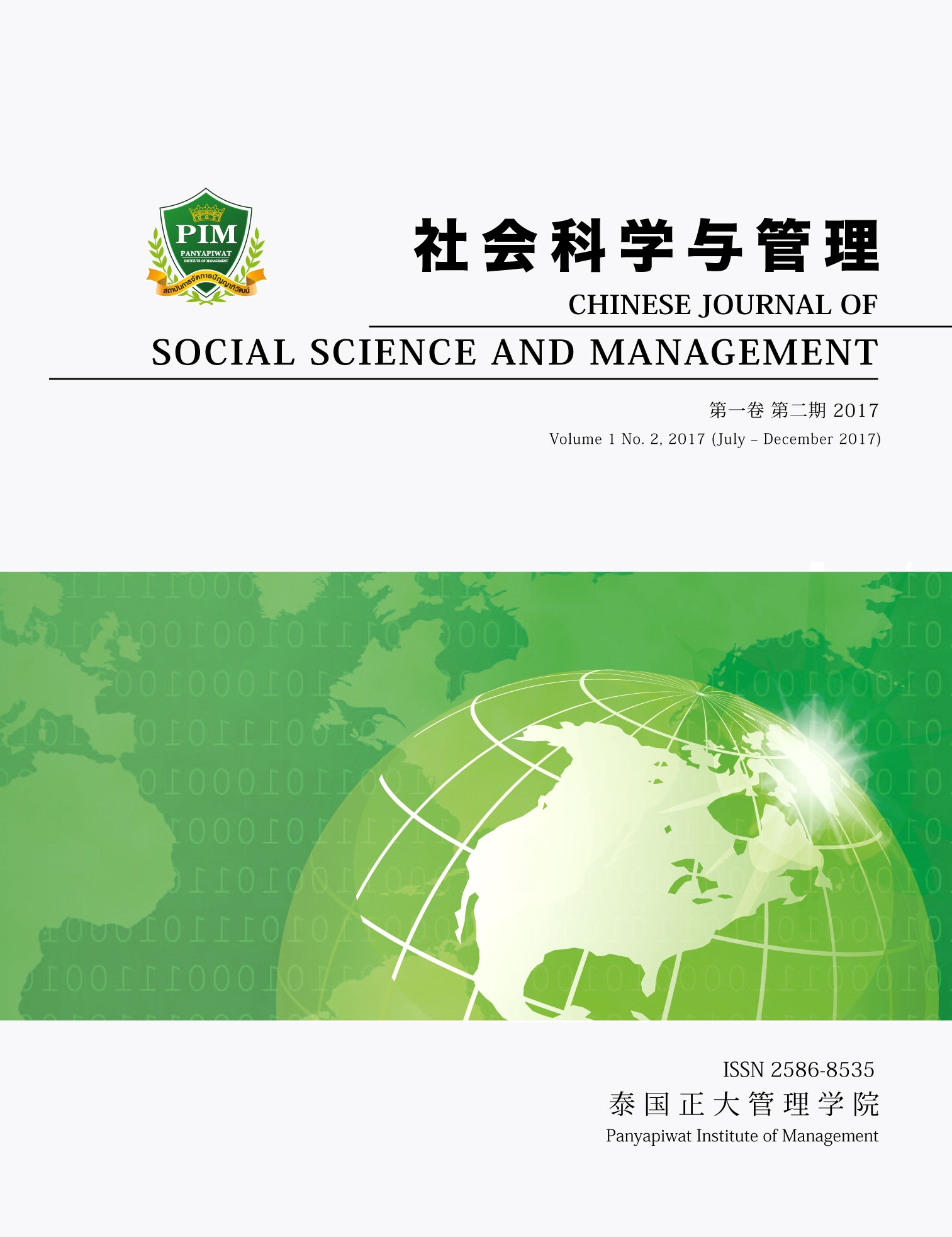CHINESE USAGE FOR TRADING BUSINESS: A CASE STUDY OF THAIPIPAT IMPORT AND EXPORT CO., LTD.
Main Article Content
Abstract
In this paper, Thaipipat Import and Export Co., Ltd. as the research object, using the interview
survey method of the company’s foreign trade department staff Chinese level and Chinese application and
learning situation were investigated and analyzed. The research results show that Sino-Thai economic and
trade cooperation has been deepened, and Chinese has become a more common business communication
language and a necessary business communication language. The popularity of business Chinese in
Thailand is very high, and many employees It is the most important Chinese language skills in daily work,
but it is also the most difficult language skills that employees think is the most difficult. The Chinese
language is the most important Chinese language skills in the daily work. Expression and Chinese
traditional culture is closely related to learning the use of Chinese at the same time, we need to pay
attention to the Chinese culture of learning and accumulation.
Finally, this paper puts forward some suggestions for improving the application level of business
Chinese by Thaipipat Import and Export Co., Ltd. First, the government should strengthen the Thai
Chinese education and practice the application of the link; second, enterprises to strengthen the entry of
business Chinese communication skills training and education, improve business Chinese application
level and communication skills; third, the staff to strengthen the Chinese social culture Aspects of learning,
pay attention to improve the treatment of Chinese culture under the context of economic and trade activities
of the handling and response capacity.
Article Details
Chinese Journal of Social Science and Management Editorial Division
The Office of Research and Development, Panyapiwat Institute of Management
85/1 Moo 2, Chaengwattana Rd., Bang Talat, Pakkred, Nonthaburi 11120, Thailand
Tel. 02 855 01048 E-mail: cjssm@pim.ac.th
References
华晓晓. (2012). 基于任务的泰国大学商务汉语教学设计. 山东大学.
杨慧娟. (2010). 浅析汉语商业广告语中的语用现象. 科学之友, 135-136.
吴海燕. (2012). 商务汉语词汇研究. 中央民族大学.
孙园园. (2008). 试析文化差异与商务谈判. 中国市场, 5, 138-139.
邹珍翠. (2013). 在沪部分外企外籍商务人士学习与使用汉语情况调查报告. 上海外国语大学.
郑国富. (2014). 中国与泰国双边贸易合作发展的状况、 问题与对策. 经济论坛, 139-145.
陈庶平. (2010). 中泰贸易的主要进出口商品构成研究. 经济研究导刊, 137-140.
去展网. 2015 年中泰双边贸易和泰国货物贸易一览, https://www.qufair.com/news/2016/04/26/2464.shtml
商务部. 国际贸易谈判部 《泰国和中国的贸易数据》 网站, https://www.dtn.go.th/filesupload/files/country/asia/china_trade.pdf
Bhatcharabhorn Wimonsarawong, 陈梦瑶 (2014). 中泰贸易发展现状及前景分析. 吉林大学.
Ing, L. Y., Urata, S. & Fukunaga, Y. (2015). How Do Exports and Imports Affect the Use of Free Trade Agreements? Firm-level Survey Evidence from Southeast Asia. ERIA Discussion paper Series.
Keorite, M. & Moubarak, M. (2016). The impacts of China’s FDI on employment in Thailand’s industrial sector: A dynamic VAR (vector auto regression) approach. Journal of Chinese Economic and Foreign Trade Studies, 9(1), 60-84.
Keorite, M. & Pan, H. (2016). The impacts of Chinese direct investment in Thailand on the Sino-Thai bilateral trade. Journal of Chinese Economic and Foreign Trade Studies, 9(1), 24-39.
Liu, Y. & Jayanthakumaran, K. (2016). People’s Republic of China (PRC): Thailand Economic Relationship After Signing of Free Trade Agreement in 2005. Chinese Global Production Networks in ASEAN. Springer International Publishing.
Ong, H. B. & Habibullah, M. S. (2012). Is China compatible with ASEAN+5 ? A gradual cointegration analysis. J Econ Stud, 39(3), 356-367.
Saelim, K. & 林灿婵. (2013). 中泰常用贸易合同文本图式结构研究. 中央民族大学.
Shen, H. F. (2013). The economic relations between China and Thailand under the context of CAFTA: an assessment. Chin Stud, 2(1), 52-60.
Triamtananan, W. & 郑佩君. (2012). 粤泰物流业发展对双边经贸影响的研究. 华南理工大学.


